Friedrich PDH15K5SG User Manual
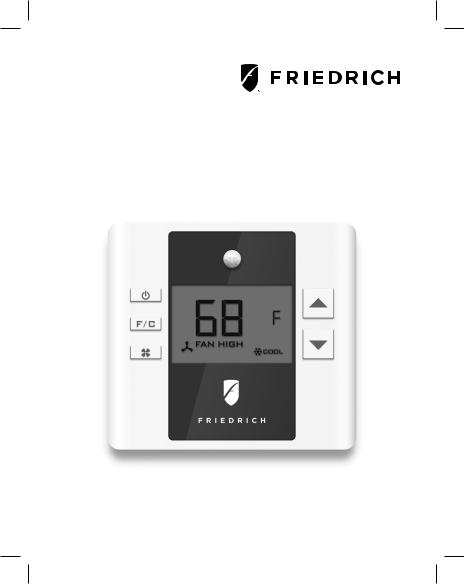
EMWRT1
Energy Management Wireless Thermostat with an Occupancy Sensor
INSTRUCTION MANUAL
PART NO. 94993002_01


Table of Contents |
|
|
Introduction............................................................................................................ |
5 |
|
Thermostat Installation........................................................................................... |
8 |
|
Pairing the Thermostat and the Control Card........................................................ |
8 |
|
Installing the Wireless Control Card....................................................................... |
9 |
|
Mounting the thermostat to the wall..................................................................... |
10 |
|
Thermostat Configuration..................................................................................... |
11 |
|
Setting the thermostat clock................................................................................. |
12 |
|
Entering the room number................................................................................... |
13 |
|
Configuring the Equipment Settings - Compressor Type..................................... |
14 |
|
Configuring the Equipment Settings - Electric Heat............................................. |
15 |
|
Configuring the Equipment Settings - Reversing Valve....................................... |
16 |
|
Configuring the Energy Saving Settings ............................................................. |
17 |
|
Testing the thermostat.......................................................................................... |
18 |
|
Accessing the Thermostat Settings...................................................................... |
19 |
|
Custom Energy Savings Settings......................................................................... |
19 |
|
Using the Thermostat Settings Screens............................................................... |
20 |
|
01 |
– FAN CONTROL MODE................................................................................ |
21 |
02 |
– 1ST STAGE DIFFERENTIAL - HEAT............................................................. |
22 |
03 |
– 2ND STAGE DIFFERENTIAL - HEAT............................................................ |
23 |
04 |
– 1ST STAGE DIFFERENTIAL - COOL.......................................................... |
24 |
05 |
– INCIDENTAL OCCUPANCY THRESHOLD................................................. |
25 |
06 |
– NIGHT OCCUPANCY THRESHOLD........................................................... |
26 |
07 |
– FORCED 2ND STAGE HEATING................................................................ |
27 |
08 |
– NIGHT OCCUPANCY START...................................................................... |
28 |
09 |
– NIGHT OCCUPANCY END.......................................................................... |
29 |
10 |
– TEMPERATURE RECOVERY TIME............................................................ |
30 |
11 – RECOVERY TEMPERATURE - HEAT......................................................... |
31 |
|
12 |
– TEMPERATURE SETBACK DELAY - HEAT................................................ |
32 |
13 |
– MINIMUM SETBACK TEMPERATURE ...................................................... |
33 |
14 |
– TEMPERATURE SETBACK DELAY - COOL............................................... |
34 |
15 |
– MAXIMUM SETBACK TEMPERATURE...................................................... |
35 |
16 |
– RECOVERY TEMPERATURE - COOL........................................................ |
36 |
17 |
– MINIMUM SET POINT................................................................................. |
37 |
3

Table of Contents |
|
|
18 |
– MAXIMUM SET POINT................................................................................ |
38 |
19 |
– TEMPERATURE CONTROL MODE............................................................ |
39 |
20 |
– AUTO CHANGEOVER SET POINT OFFSET (DEAD BAND)..................... |
40 |
21 |
– SETBACK SET POINTS / AUTO-RESTORE............................................... |
41 |
22 |
– AUTOMATIC HUMIDITY CONTROL† .......................................................... |
42 |
23 |
– TEMPERATURE CALIBRATION.................................................................. |
43 |
Thermostat Maintenance..................................................................................... |
44 |
|
Replacing Thermostat Batteries........................................................................... |
44 |
|
Troubleshooting................................................................................................... |
45 |
|
Error Codes.......................................................................................................... |
45 |
|
Thermostat is not controlling the HVAC unit........................................................ |
46 |
|
APPENDIX 1 - Energy Saving Presets................................................................ |
48 |
|
APPENDIX 2 - Glossary....................................................................................... |
49 |
|
Warranty Information............................................................................................ |
50 |
|
Technical Specifications....................................................................................... |
52 |
|
4

Introduction
Friedrich EMWRT1 Energy Management Thermostats for the hospitality industry deliver unprecedented energy savings without compromising guest comfort.
Integrated occupancy sensor uses a combination of motion and thermal sensing technologies for accurate occupancy detection. Reliable occupancy detection allows saving energy when rooms are unoccupied.
Energy saving presets eliminate the guesswork and make it easy to adjust the energy saving settings. (Patent Pending)
Fully configurable energy saving settings allow customizing the thermostat energy saving settings to fit any situation.
Large buttons with international symbols make it easy to adjust the temperature in ±1° °F or °C and control the fan speed.
Comprehensive configuration options ensure full compatibility with virtually any existing or emerging hospitality HVAC system with up to 2 heat and 1 cool stages.
Built-in wireless mesh-networking enables optional remote management. For installation of a networking thermostat with remote management, refer to the “Network Installation” manual.
5

6

Before You Begin
Determine the appropriate installation location for the thermostat. The thermostat should face the bed area of the room.
Set the PTAC/Vert-I-Pak unit to “External Thermostat” (Class 2) mode. Consult the PTAC/Vert-I-Pak unit documentation to determine how to set the PTAC/Vert-I-Pak unit to “External Thermostat” mode.
7

Before You Begin
Pairing the Thermostat and the Control Card
Thermostat and Control Card must be paired in order to operate together. Once paired, the thermostat cannot be used with another wireless control card without repeating the pairing procedure. Friedrich thermostats are pre-linked with the card in the box.
In case of Network Installation with Remote Management, the thermostat and the
Control Card must be paired with a Network Programmer specific to the property before the installation.
Thermostat and Control Card must not be powered during the pairing procedure - remove batteries from the thermostat and unplug the control card from the PTAC/Vert-I-Pak unit during the pairing procedure.
Plug one programmer connector into the thermostat;
Plug the other programmer connector into the control card;
Push the black button on the programmer. The red light on the programmer should turn on and remain steadily lit;
If the red light on the programmer is blinking or is not steadily lit, unplug the programmer from the thermostat and the control card and repeat the steps above.
Unplug the programmer from the thermostat and the control card;
8

Thermostat Installation
Installing the Wireless Control Card
Unplug the PTAC/Vert-I-Pak* unit from power supply
Connect the low voltage wires to screw terminals on the PTAC/Vert-I-Pak* unit low voltage terminal block - refer to the Wiring Table to determine proper connections.
Mount the control card to the PTAC/Vert-I-Pak* unit.
Ensure that the Wireless Control Card antenna is not touching any metal components of the PTAC/Vert-I-Pak* unit.
Ensure that the Wireless Control Card Antenna is facing the thermostat on the wall and is oriented so that any metal parts of the PTAC/Vert-I-Pak* unit do not obstruct the wireless communication to the thermostat and, in case of a network installation, to other wireless control cards and the server.
Ensure that the control card is secured and cannot fall into the
PTAC/Vert-I-Pak* unit Condensation Pan.
Plug in the PTAC/Vert-I-Pak* unit to power supply.
Wiring Table - 24V AC |
|
Wiring Table - 24V DC |
||||
|
|
|
|
|
|
|
Wire |
Terminal |
Terminal |
|
Wire |
Terminal |
Terminal |
Color |
Letter |
Connection |
|
Color |
Letter |
Connection |
Black |
C |
Common |
|
Black |
R |
24V |
Red |
R |
24V |
|
Red |
C |
Common |
Yellow |
Y |
Compressor |
|
Yellow |
Y |
Compressor |
White |
W |
Heat |
|
White |
W |
Heat |
Orange |
O or B |
Reverse Valve |
|
Orange |
O or B |
Reverse Valve |
Green |
GH |
Fan High |
|
Green |
GH |
Fan High |
Purple |
GL |
Fan Low |
|
Purple |
GL |
Fan Low |
NOTE: If the PTAC/Vert-I-Pak* unit has only one (1) fan speed, connect both fan control wires – Green and Purple – to the fan terminal (G).
* The wireless control card should never be installed inside the metal electrical control enclosure/box of the PTAC/Vert-I-Pak unit. Failure to comply will result in obstruction to the wireless communication. The control card is always to be mounted as shown on the pictures on the next page.
9
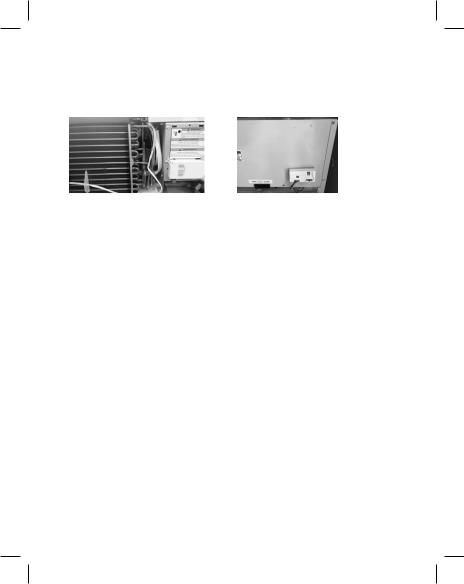
Thermostat Installation
Wireless Control Card-Typical Placement Location
PTAC |
Vert-I-Pak |
Mounting the thermostat to the wall
Remove the thermostat cover;
Use the supplied wall anchors and mounting screws to secure the thermostat to the wall;
Insert two (2) C-cell batteries (not-supplied) into the thermostat battery compartment;
Follow the “Thermostat Configuration” instructions;
Replace the thermostat cover and screw in the locking screw;
10

Thermostat Confi guration
Once the thermostat is powered, thermostat confi guration settings will appear on the thermostat screen.
In order to properly operate the PTAC/Vert-I-Pak unit:
Set the thermostat clock;
Enter the room number;
Confi gure the equipment settings;
Select Energy Savings Preset;
The thermostat confi guration screens have a 3-minute time-out. If no action is taken within three (3) minutes, the thermostat will exit confi guration settings.
NOTE: If the thermostat is connected to a network, the equipment settings confi gured on the thermostat will be ignored and the thermostat settings confi gured through the network will be applied.
CONFIGURATION
 BUTTON
BUTTON
NOTE: You can access Thermostat Confi guration settings at any time by pressing the
“Confi guration” button.
11
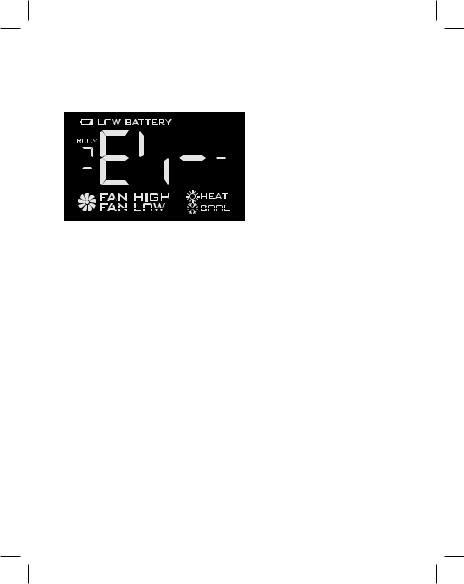
Thermostat Confi guration
Setting the thermostat clock
HOURS MINUTES
Set the thermostat clock to current time in 24h (Military Time) format.
Use the “Up” and “Down” buttons to set the hours;
Press the “Fan” button to advance to the minutes setting;
Use the “Up” an “Down” buttons to set the minutes;
Press the “F/C” button to advance to the next menu;
Setting the clock correctly is crucial for proper operation of the thermostat.
12
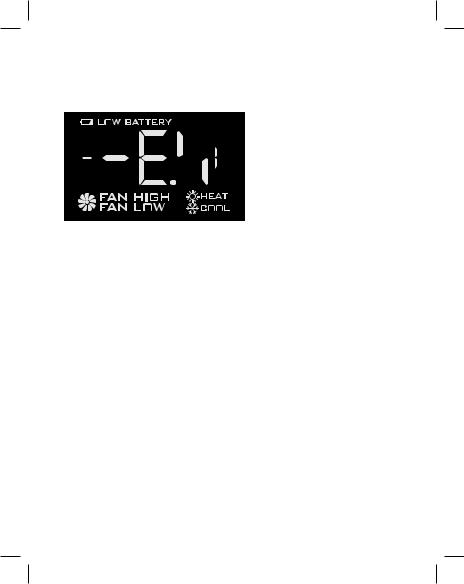
Thermostat Confi guration
Entering the room number
Enter the room number by changing the digits on the screen. Leading zeros “0” preceding other digits will be ignored, i.e. Room number “123” should be entered as “00123”.
Use the “Up” and “Down” buttons to change the digit;
Press the “Fan” button advance to the next digit;
Press the “F/C” button to advance to the next menu;
Entering the room number correctly is crucial for proper operation of remotely managed thermostats.
13
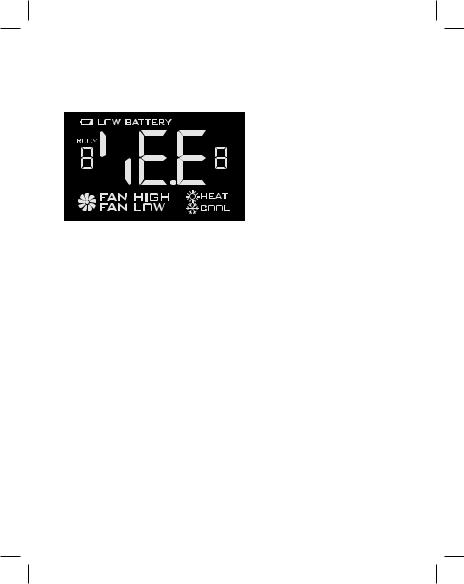
Thermostat Confi guration
Confi guring the Equipment Settings - Compressor Type
COMPRESSOR TYPE
Use the “Up” and “Down” buttons to change the compressor type by changing the fi rst digit;
0 No Compressor
1 Heat Pump
2* Air Conditioner
Press the “Fan” button to advance to the next setting;
* Indicates default setting;
14
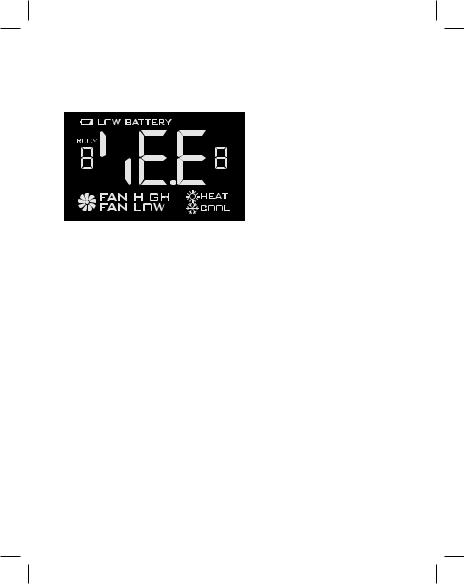
Thermostat Confi guration
Confi guring the Equipment Settings - Electric Heat
|
|
|
|
|
|
|
|
|
|
|
|
|
|
|
|
ELECTRIC HEAT |
|
||
|
Use the “Up” and “Down” buttons to change the Electric Heat setting by |
|||
0 |
changing the second digit; |
|||
No Electric Heat |
||||
1 * |
Electric Heat |
|||
Press the “Fan” button to advance to the next setting;
* Indicates default setting;
15

Thermostat Confi guration
Confi guring the Equipment Settings - Reversing Valve
REVERSING VALVE
Use the “Up” and “Down” buttons to change the Reversing Valve setting by changing the third digit;
0
1 *
OB contact is energized to cool; OB contact is energized to heat;
Refer to the HVAC unit documentation to determine the correct OB VALVE setting.
If incorrect OB VALVE Setting is selected, the HVAC unit will turn on the heating when air conditioning is requested and turn on the air conditioning when heating is requested;
Press the “Fan” button to advance to the next setting;
Press the “F/C” button to advance to the next menu;
* Indicates default setting;
16
